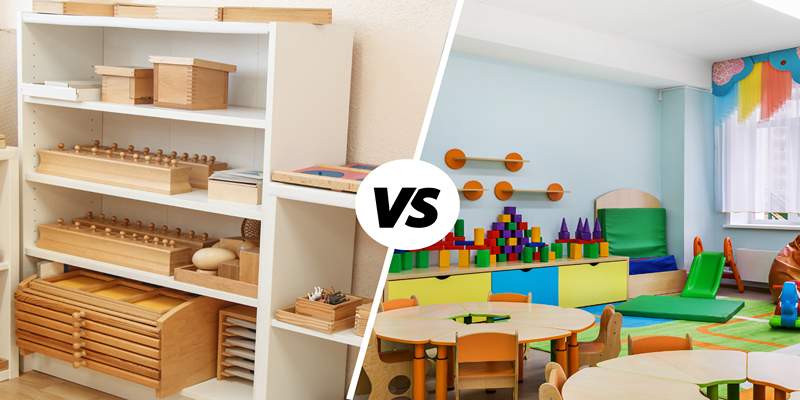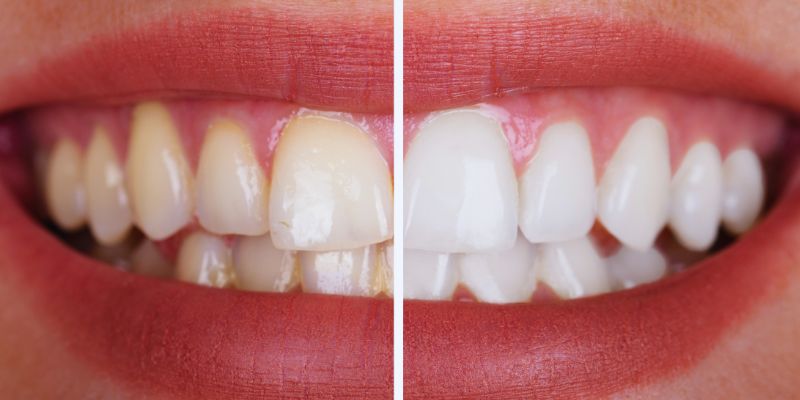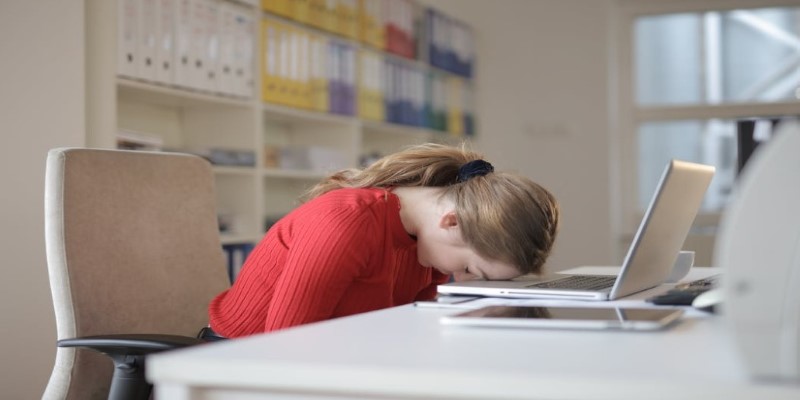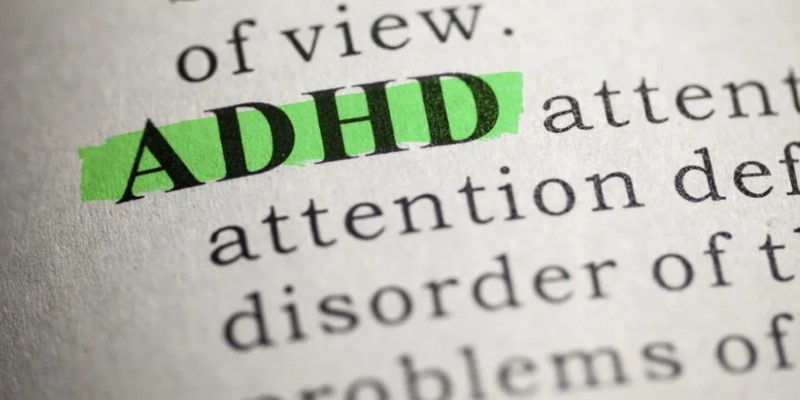Montessori vs. Traditional Preschools: Choosing the Best for Your Child
One of the most popular debates about how to choose the best preschool for your child is between Montessori and standard ways of teaching. They each have their own ideas about how to teach, so how do you know which one is best for your child? This blog post will talk about the differences between Montessori preschools and regular preschools. It will also list the pros and cons of each to help you make a better choice.
An important part of a child's cognitive, social, and emotional growth is early childhood education. It sets the stage for learning throughout life, so picking the right method is very important. Let's look more closely at both Montessori and traditional preschool to see how they work and figure out which one might be better for your child.
What is Montessori Preschool?
Dr. Maria Montessori was an Italian doctor and teacher who thought that children should be encouraged to learn through hands-on, self-directed tasks. This is what Montessori education is based on. In a Montessori preschool, kids are free to explore their surroundings and pick things that interest them. Teachers are more like guides than strict teachers.
The core principles of Montessori education include:
- Child-Centered Learning: Children learn at their own pace, selecting activities that resonate with their interests.
- Independence: The environment is designed to promote self-sufficiency, with children encouraged to complete tasks independently.
- Mixed Age Groups: All Montessori classrooms typically have children of different ages, allowing younger students to learn from older peers and fostering a sense of community.
- Hands-On Learning: Montessori classrooms are equipped with materials that children can manipulate to learn concepts through sensory experiences.
Key Features of Montessori Education:
- Emphasizes intrinsic motivation and personal responsibility.
- Fosters independence and self-regulation.
- Encourages exploration and creativity.
- Focuses on the development of the whole child, including social, emotional, and academic growth.
- Promotes long-term, self-paced learning rather than fixed outcomes.
What is Traditional Preschool?
Traditional preschool education is the more conventional approach to early childhood learning, often following a set curriculum designed to prepare children for kindergarten. In a traditional preschool, children typically engage in a structured schedule of activities, with a focus on specific subjects like literacy, math, and social skills. Teachers in traditional preschools tend to be more directive, guiding children through lessons and providing clear instructions.
The core features of traditional preschools include:
- Teacher-Led Learning: Teachers guide the learning process with structured activities and direct instruction.
- Fixed Curriculum: There is often a predetermined curriculum that focuses on academic skills such as reading, writing, and basic math.
- Group Learning: Children often work in large groups, with a focus on socialization, following instructions, and learning in a structured environment.
- Standardized Expectations: Traditional preschools often have clear benchmarks for what children should learn by the end of the year.
Key Features of Traditional Preschool:
- Structured and routine-based learning.
- Teacher-directed lessons focused on academic skills.
- Emphasis on preparing children for formal schooling.
- Less emphasis on individual interests or self-directed learning.
Montessori vs. Traditional Preschool: Key Differences

Now that we've covered the basics of both educational approaches let's take a closer look at how Montessori and traditional preschools differ in terms of teaching philosophy, classroom environment, curriculum, and child development.
1. Teaching Philosophy
In Montessori preschools, the focus is on fostering independence, self-motivation, and intrinsic learning. The teacher serves as a guide, providing the tools and materials children need to learn at their own pace. Children are given the freedom to choose their activities and engage in them for as long as they desire, developing a deep sense of responsibility for their learning.
In contrast, traditional preschools are more teacher-directed. The educator leads the activities and sets the pace of learning. Children follow instructions and complete tasks as directed by the teacher, with a strong emphasis on group activities and learning outcomes that align with academic standards.
2. Classroom Environment
The purpose of Montessori classrooms is to encourage self-reliance and experiential learning. The classroom is typically filled with age-appropriate materials, such as sensory tools, puzzles, and manipulatives, that allow children to engage with academic concepts in a tactile and experiential way. The environment is set up to encourage exploration, where children are free to move about and choose the activities that interest them most.
Traditional preschool classrooms, on the other hand, tend to have a more structured setup. The teacher's desk is typically the focal point, and activities are organized in a way that emphasizes group learning. While there may still be hands-on materials, the focus is usually more on academic tasks, such as worksheets and structured games, rather than the freedom to explore.
3. Curriculum and Learning Approach
Montessori education follows a child-centered curriculum, allowing children to explore subjects in a way that aligns with their natural curiosity. The curriculum is flexible and adaptable, allowing children to progress at their own pace without being bound by age-based expectations. Montessori educators focus on fostering the whole child, including social and emotional skills, in addition to academic learning.
In traditional preschools, the curriculum is more structured and often focuses on academic preparation for kindergarten. Teachers guide children through lessons in areas such as reading, math, science, and social studies. There is a focus on group work and following directions, with the goal of preparing children for more formal schooling. While social skills are emphasized, academic performance is often prioritized.
4. Socialization and Peer Interactions
Montessori preschools typically involve mixed-age classrooms, where children of varying ages work together. Younger children learn from older peers, while older children develop leadership and mentoring skills. This arrangement encourages collaboration, teamwork, and the development of social and emotional skills in a more organic way.
Traditional preschools often have children of the same age in each class, which allows for more structured peer interactions. While socialization is still encouraged, the interactions may be less diverse in terms of age groups, and the teacher is more involved in guiding social interactions among the children.
5. Pace and Structure of Learning
In Montessori classrooms, children have the freedom to learn at their own pace. They can spend as much time as they need on an activity or move on to something else when they feel ready. The emphasis is on deep, meaningful learning rather than meeting a set list of academic standards.
In traditional preschools, the pace of learning is usually more fixed, with children expected to meet certain milestones by the end of the school year. The focus is often on preparing children for the more structured environment of kindergarten and beyond, with an emphasis on meeting academic benchmarks.
Which Is Better for Your Child?

Ultimately, whether Montessori or traditional preschool is better for your child depends on their learning style, personality, and needs. Here are some factors to consider when choosing between the two:
- Learning Style: If your child thrives in a structured environment with clear instructions and enjoys group activities, a traditional preschool may be a good fit. If your child is more independent and enjoys exploring on their own, a Montessori preschool might be a better choice.
- Developmental Needs: Montessori education is ideal for children who need to develop independence, self-regulation, and a love of learning at their own pace. Traditional preschools are often more focused on preparing children for academic success in a structured classroom environment.
- Socialization: If mixed-age socialization and peer learning are important, Montessori may be more beneficial. Traditional preschools may provide more opportunities for age-specific peer interactions.
Conclusion
Both Montessori and traditional preschools offer valuable benefits for early childhood education. Montessori schools focus on fostering independence, creativity, and hands-on learning, while traditional preschools emphasize academic readiness and structured instruction. Understanding your child's personality, needs, and learning style will help guide your decision and ensure that they are in the best environment for their growth and development.
Choosing the right preschool is an important decision, and there is no one-size-fits-all approach. By considering the core differences between Montessori and traditional preschools, you can make an informed choice that aligns with your child's unique educational journey.












